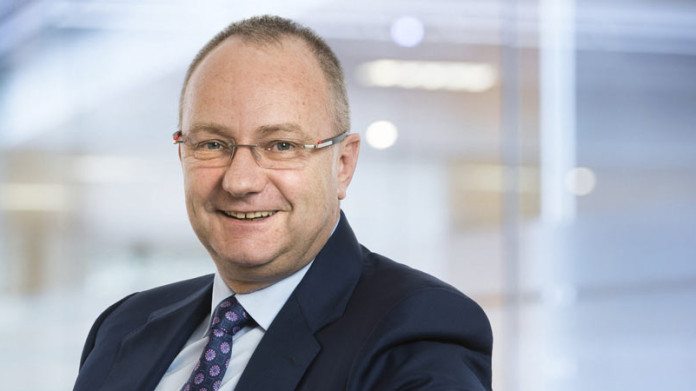
ANGLO American ended its strategy of cutting net debt through asset disposals saying instead it would operate twice as many assets as targeted a year ago owing to efficiency gains it had achieved.
It also planned to resume dividend payments in its 2018 financial year following a reduction in net debt to $8.5bn which it achieved through a $3.5bn improvement in free cash flow, utilisation of taxed losses, and $1.8bn in disposal proceeds.
The bottom line for the year to December was $1.24 in share earnings compared to a loss of $4.36/share in the previous financial year. The operating improvement was owing to net $1.5bn increase in volumes, and cost controls which overcame a 3% decline in average realised prices.
Net debt as of December 31 was at $8.5bn, $1bn better than consensus, and far better than the $10bn target the group had earmarked a year ago in Anglo’s results presentation in which its CEO, Mark Cutifani, was pilloried for failing to respond quickly enough to the decline in commodity prices.
Today, however, Cutifani declared the group unrecognisable from the one he took over in 2013. “This is not the company you knew three years ago; we have streamlined; we have got fitter,” he said in a media conference call.
“I make no apologies for turning Anglo American into the kind of machine it is today,” he said, adding that instead of cutting assets under control to about 16 – as described a year ago – the group would hold no less than 30 assets.
This included the Minas Rio iron ore mine in Brazil and the group’s larger South African assets: its 70% stake in Kumba Iron Ore, its export coal mines, and its stake in Samancor, a manganese operation it shares in joint venture with South32.
“We haven’t planned further assets sales for deleveraging,” he said. “We do not need to sell assets to relieve the balance sheet. It is done. We are now in a different conversation.
“If assets go from here, it will be to clean up or to improve the quality of the overall portfolio,” he said. The South African domestic coal mines – three in all as well as the New Largo project – would be sold, however. Cutifani said those discussions were complex but he hoped for an outcome in three to four months.
Cutifani also indicated the consolidation of the South African assets – an alternative restructuring methodology as suggested by Anglo shareholder, the Public Investment Corporation (PIC) – had been put on the back-burner. He did not say why those conversations had foundered, but he said a transaction would have to suit “all shareholders”.
“We are happy to keep Kumba and the export coal mines. If there are any ideas in terms of this we would be open to them, but today we are the happy owner of two strong assets,” he said.
“We would be open to a conversation on the consolidation of the assets, but that is just an option. Given the cost and efficiencies we have delivered, we are a happy holder of both assets as we stand today,” he said.
The outcome is that Anglo as a fourth bucket of assets consisting of iron ore and manganese (Sishen, Kolomela, Minas Rio and Samancor), coal (South African export coal, Cerrejon and Australian metallurgical coal) and nickel (Barro Alto) where previously it looked at three buckets consisting of platinum, diamonds and copper.
NET DEBT
Cutifani said Anglo had made “good progress” but there was still a lot of work to be done in 2017 including taking net debt down to a $7bn target. When dividends are declared, it was likely to follow a payout policy of 30% to 40% of earnings.
Goldman Sachs said net debt could be under $5bn by end-2017 and lower yet were current spot prices for Anglo’s metals maintained through the year. “In our view, this makes a credit rating upgrade to investment grade more likely sometime in 2017,” the bank said in a note.
“This was a strong set of numbers, reflecting the higher prices of iron ore, met/thermal coal and manganese, combined with benefits from productivity and cost reduction initiatives,” said Goldman Sachs.
In terms of divisional composition of Anglo’s earnings before interest, tax, depreciation and amortisation, De Beers was the largest contributor of some $1.4bn with an Ebitda margin of 23%.
Kumba Iron Ore had a major impact, contributing $1.35bn to Ebitda but at a margin of 48%. The next best margins were achieved by the coal operations in Australia and South Africa which recorded a 39% Ebitda margin for the year. Overall, Anglo lifted the Ebitda margin five percentage points to 26%.
Said Cutifani: “We are producing more product today than four years ago, but we have a smaller cost base. We are doing it with 40% less people. Anglo currently employs 95,000 people down from 151,000 in its 2014 financial year.
Commenting on the current financial year, Cutifani said Anglo was targeting another $1bn in cost and volume improvements and attributable cash flow improvements of $2bn.
Capital expenditure would be unchanged at $2.5bn year-on-year and which compares to capex of $4bn in the 2015 financial year. Net deb to Ebitda would be between 1x to 1.5x which compares to a 2016 net debt to Ebitda ratio of 1.5x.











